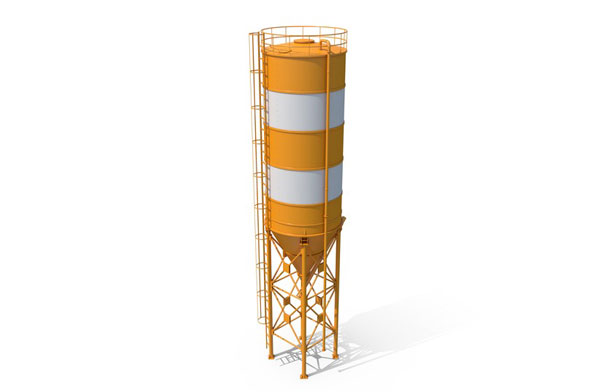
Storage Silo For Cement & Fly Ash
Cement silos are essential storage structures used in the construction industry to store cement and other bulk materials, such as fly ash, slag, and limestone. They play a crucial role in ensuring a steady and uninterrupted supply of cement during the construction process. These silos are cylindrical or rectangular in shape and come in various sizes, ranging from small on-site storage units to large industrial installations.
The primary purpose of a cement silo is to store bulk quantities of cement and maintain its quality until it is needed for construction purposes. The silo protects the cement from external elements such as moisture, air, and contaminants, which could otherwise lead to spoilage or a reduction in cement’s effectiveness. Additionally, cement silos aid in efficient logistics and transportation, as cement can be produced in bulk and stored for later use.
| Model | VECS-50 | VECS-100 | VECS-150 | VECS-200 |
|---|---|---|---|---|
| Capacity | 50 TON | 100 TON | 150 TON | 200 TON |
- Technical Specification
- Features
- Benefits
- Gallery
1. Dimensions:
- Shell Diameter: as per customer’s requirement.
- Shell Length: Dependent on Shell Diameter.
- Cone Length: as per customer’s requirement.
- Bottom Cone plate grade (IS 2062 GR. B)
- Top Cone plate grade (IS 2062 GR. B)
- Shell Plate grade (IS 2062 GR. B)
2. Structure:
- Leg Structure: 8″ pipe c-class ERW
- Channel & Angle: IS 2062 GR. B (Rolling)
- Fabrication: As per IS 10987-1992
- Welding Process: As per IS 9595: 1980 GTAW (Electrode E7018)
3. Components:
- Safety Valve Port: Suitable for WAM make (Valve cost not included)
- Aeration Pad: Suitable for WAM make (Aeration Pad cost not included)
4. Additional Features (Provisional):
- High and Low-Level Indicator (Cost not included)
- Storage Capacity
- Material Quality and Durability
- Airtight and Waterproof Design
- Access Ladder and Platform
- Level Indicators
- Control System
- Reduced transportation costs
- Minimizes cement wastage
- Continuous production
- Faster loading and unloading
- Space-saving
- Flexibility and scalability
